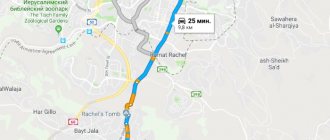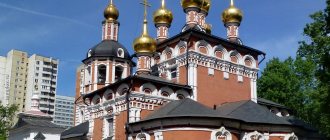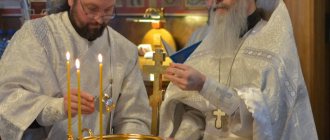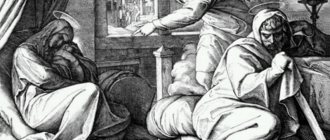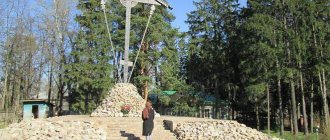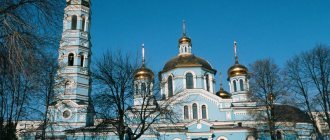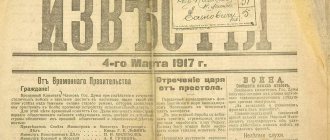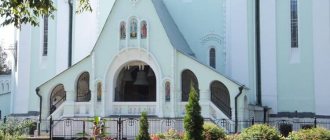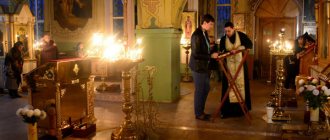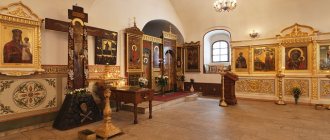Mir
Palestine Cave of the Nativity Map loading...
{"format":"leaflet","minzoom":false,"maxzoom":false,"limit":50,"offset":0,"link":"all","sort":[""], "order":[],"headers":"show","mainlabel":"","intro":"","outro":"","searchlabel":"\u2026 \u0441\u043b\u0435\ u0434\u0443\u044e\u0449\u0438\u0435 \u0440\u0435\u0437\u0443\u043b\u044c\u0442\u0430\u0442\u044b","default":"","import-annotation":false,"width ":"auto","height":"350px","centre":{"text":"","title":"""link":"""lat":31.70430194000000057030774769373238086700439453125,"lon": 35.207909999999998262865119613707065582275390625,"icon":""},"title":"","label":"","icon":"","lines":[],"polygons":[],"circles":[ ],"rectangles":[],"copycoords":false,"static":false,"zoom":8,"defzoom":14,"layers":["OpenStreetMap"],"image layers":[] ,"overlays":[],"resizable":false,"fullscreen":true,"scrollwheelzoom":true,"cluster":false,"clustermaxzoom":9,"clusterzoomonclick":true,"clustermaxradius":80, "clusterspiderfy":true,"geojson":"","clicktarget":"","showtitle":true,"hidenamespace":false,"template":"","userparam":"","activeicon": "","pagelabel":false,"ajaxcoordproperty":"","ajaxquery":"","locations":[{"text":"\u003Cb\u003E\u003Ca href=\"/palomnik/%D0% 9F%D0%B5%D1%89%D0%B5%D1%80%D0%B0_%D0%A0%D0%BE%D0%B6%D0%B4%D0%B5%D1%81%D1%82% D0%B2%D0%B0_%D0%A5%D1%80%D0%B8%D1%81%D1%82%D0%BE%D0%B2%D0%B0\» title=\»\u041f\u0435\ u0449\u0435\u0440\u0430 \u0420\u043e\u0436\u0434\u0435\u0441\u0442\u0432\u0430 \u0425\u0440\u0438\u0441\u0442\u043e\u0432\u0 430\u003E\u041f\u0435\ u0449\u0435\u0440\u0430 \u0420\u043e\u0436\u0434\u0435\u0441\u0442\u0432\u0430 \u0425\u0440\u0438\u0441\u0442\u043e\u0432\u0 430\u003C/a\u003E\u003C/ b\u003E","title":"\u041f\u0435\u0449\u0435\u0440\u0430 \u0420\u043e\u0436\u0434\u0435\u0441\u0442\u0432\u0430 \u0425\u0440\u0438\ u0441\u0442 \u043e\u0432\u0430","link":"","lat":31.70430194000000057030774769373238086700439453125,"lon":35.207909999999998262865119613707065582 275390625,"icon":""}],,"imageLayers":[]}
31.704679; 35.203736
Palestine, Bethlehem
Palestine
Phones:
+972 (2) 276-60-40, fax: +972 (2) 276-60-41; +972 (2) 625-00-94 (Pilgrimage service of the Russian Spiritual Mission).
Cave of the Nativity, Grotto of the Nativity, Holy Nativity Scene
- the greatest Christian shrine, a cave in the rock where Jesus Christ was born from the Virgin Mary.
Located under the pulpit of the Basilica of the Nativity in Bethlehem. In surviving written sources it was first mentioned around the year 150. The underground temple has been located here since the time of St. Helena. Belongs to the Jerusalem Orthodox Church.
History[[edit]h2>
What kind of cave it was and who it belonged to is unknown. Most likely, it was of natural origin, and later it was adapted for household needs, including for keeping pets. In Bethlehem, many old buildings are built over caves in the limestone cliffs. Often houses located on a slope have a cave on their first floor, the entrance to which is at street level. This floor was used as a stable, and the family lived on the second floor. Many of these rooms have stone troughs or mangers carved into the rock, as well as iron rings so that animals can be tied up at night. These caves, exactly the same as the Nativity Grotto, were used to keep animals until the mid-20th century.
The canonical texts do not speak directly about the cave. The evangelists Luke (Luke 2:4-7) and Matthew (Matthew 2:1-11) report that Christ was born in Bethlehem, but none of them mentions the cave, only Luke indirectly points to it, reporting that the Mother of God “laid Him in a manger, because there was no room for them in the inn” (Luke 2:7).
The oldest direct written evidence that has probably reached us about the cave as the place of the Nativity belongs to St. Justin the Philosopher. In his essay “Dialogue with Tryphon the Jew,” written in 150-155, he claims that the Holy Family found shelter in a cave near Bethlehem. The cave as the site of the Nativity is mentioned many times in the apocryphal Proto-Gospel of James (chapters 18-21), presumably written around the year 150. Origen visited Bethlehem almost a century before the construction of the Basilica of the Nativity, around 238. Later, in his essay Against Celsus, written around 247, he mentions a cave in Bethlehem, which local residents considered the site of the Nativity of Christ.
Man-made nativity scene
Sometimes the appearance of man-made nativity scenes is attributed to Francis of Assisi, who created such a living panorama as a reminder of the original holiday. This is unlikely, but in any case, from the 12th-13th centuries, static compositions from a variety of materials began to appear in Europe, which depicted the Holy Family, angels, shepherds and other participants in the Nativity scene. Often they were presented in conditions that corresponded to modernity, and not to ancient Jewish life. Mystery plays in which the Birth of the Savior was depicted in person were also popular.
Description[[edit]h2>
General view of the Holy Nativity scene
The dimensions of the cave are 12.3 × 3.5 m and 3 m in height, that is, it is quite narrow and long, oriented along the west-east line. The Nativity site is located at its eastern end. Two staircases from the time of Justinian the Great lead into the cave, northern and southern, each consisting of 15 porphyry steps. The northern staircase belongs to Catholics, the southern - to Orthodox and Armenians, they are located in the eastern part of the cave symmetrically on both sides of it. Usually pilgrims descend along the southern stairs and ascend along the northern one. These entrances acquired their current appearance in the 12th century, when bronze doors from the 5th and 6th centuries were enclosed in marble portals, and the lunettes above the doors were decorated with stone carvings. The floor and lower part of the walls are decorated with light marble, the rest is draped with fabric or covered with 19th-century trellises, and icons are hung on the walls. The ceiling is heavily smoked, 32 lamps are suspended on it, and there are 53 of them in the cave, and this number has not changed for a long time. The cave has no natural light; it is currently illuminated by electricity and partly by lamps and candles.
In the western wall of the cave there is a door that leads to the northern part of the system of grottoes located under the basilica, including the grotto in which St. Jerome of Stridon lived. As a rule, this door is locked.
The ancient silver and gold star was stolen in 1847 (it is unknown by whom, but most likely by the Turks). This theft became a new reason for mutual grievances between Orthodox Greeks and Catholics and even partially awakened in 1848 the “question of Holy Places” (see Crimean War). The star that can be seen now was made according to the exact model of the ancient one and strengthened in 1847 by order of Sultan Abdulmecid I and at his expense.
Christmas place[[edit]h3>
The birthplace of Christ is marked by a silver star, which is set into the floor and was once gilded and decorated with precious stones. The star has 14 rays and symbolizes the Star of Bethlehem, inside a circle there is an inscription in Latin: “Hic de virgine Maria Iesus Christus Natus est” (“Here Jesus Christ was born from the Virgin Mary”). Above this star in a semicircular niche hang 16 lamps, of which six belong to the Orthodox, six to the Armenians and four to the Catholics. Behind these lamps, small Orthodox icons are placed in a semicircle on the wall of a niche. Two more small glass lamps simply stand on the floor just behind the star against the wall.
Directly above the Nativity site is an Orthodox marble throne. Only Orthodox Christians and Armenians have the right to celebrate the liturgy on this throne. In front, the throne rests on two small marble columns, and in the niche above it there are small fragments of Byzantine mosaics. When there is no service, the throne is closed with a special removable grille. Behind the throne on the wall are six small Orthodox icons.
The chapel of the manger[[edit]h3>
In the southern part of the cave to the left of the entrance there is a chapel of the Manger. This is the only part of the cave that is run by Catholics. The aisle resembles a small chapel measuring approximately 2x2 m or a little more, the floor level in it is two steps lower than in the main part of the cave. In this chapel to the right of the entrance is the place of the Manger, where Christ was laid after his birth. Actually, the Manger is a feeding trough for domestic animals that was in the cave; the Most Holy Theotokos, of necessity, used it as a cradle. The interior of the Manger was taken as a great shrine to Rome to the church of Santa Maria Maggiore, where it is known under the names Sacra culla, Cunambulum or Praesepe. This was done in the middle of the 7th century under Pope Theodore I, a few years after the seizure of the Holy Land by Muslims, perhaps in order to prevent desecration of the shrine. The same part of the Manger that remained in Bethlehem was covered with marble and now represents a recess in the floor, arranged in the form of a cradle, above which five unquenchable lamps burn. Behind these lamps, against the wall, there is a small image of the Bethlehem shepherds worshiping the Child.
To the left of the entrance to the chapel of the Manger there is a Catholic altar of the Adoration of the Magi. The altarpiece located here depicts the adoration of the Magi to Christ.
Nativity scene in Russia
In Russia, they showed greater interest in theatrical nativity scenes (in Europe, of course, they existed, but were not so popular). This word was used to describe both short performances based on Christmas scenes and two- or three-story houses in which the action took place.
Nativity scene art especially flourished by the 19th century. In St. Petersburg, by this time, there was even a dynasty of nativity scene makers, the Kolosov family, who kept and passed on the secrets of Christmas performances (similar phenomena are still found in Europe - for example, in modern Naples there is a street full of nativity scene workshops). By the end of the century, nativity scene masters traveled throughout the country - all of Russia already knew what a nativity scene was. It became a much more secular art than before, and the Christmas mystery ended with a completely secular comedy with local colorful humor.
The artists walked with boxes not only on Christmas Eve, but also further, right up to Maslenitsa, and even until the summer. The revolution of 1917 broke this tradition, and soon enough the construction of nativity scenes, the texts of performances, and the secrets of making dolls were forgotten until the end of the 20th century. Folklorists under the leadership of D. Pokrovsky began restoring nativity boxes only in the 1980s; it was their experiments that were ultimately taken as the basis for the revived tradition.
Where to stay[[edit]h2>
Pilgrim Residence
- Pilgrim's House in Bethlehem
In light of the emerging stability and further settlement of the situation in Palestine, the Russian Orthodox Church opened the Pilgrim Residence in Bethlehem, expressing hope for the possibility of further peaceful coexistence of the peoples of the Holy Land.
The pilgrim's house in Bethlehem is located 200 meters from the great Christian shrine - the Church of the Nativity. Thanks to this location, every morning guests have the opportunity to pray during the Divine Liturgy in the cave where the Lord Jesus Christ was born.
The hotel creates all the necessary conditions so that every pilgrim visiting the Holy Land feels the cordiality and hospitality of the Holy City of Bethlehem and retains the joy of the Nativity of Christ in his heart for a long time.
The hotel was built in 2000 with the blessing of His Holiness Patriarch Alexy II of Moscow and All Rus'.
Near the great Christian shrine, the Residence provides for a comfortable and safe stay:
- 62 standard rooms for accommodation from 1 to 3 people.
- 8 VIP suites.
- Presidential Suite with Jacuzzi, elevator and study.
Accommodation in the Pilgrim House in Bethlehem is carried out through the Pilgrimage Service of the Russian Spiritual Mission.
Address:
Pilgrim Residence. 73, Milky Grotto Street, Bethlehem.
Mailing address:
Pilgrim Residence. 73, Milky Grotto Street, Bethlehem, Palestine POB436
Phones:
+972 (2) 276-60-40, fax: +972 (2) 276-60-41; +972 (2) 625-00-94 (Pilgrimage service of the Russian Spiritual Mission).
Email:
Construction of a theatrical nativity scene
In order to better understand what a nativity scene is, let’s look at its structure. As already mentioned, most often the den house consisted of two or three floors. In fact, a nativity scene is such a small model of the Universe, the world above and the world below. At the top, scenes related to the birth of Jesus Christ were played out. This half was covered with blue paper; in the back there was a manger, around which stood figures of the Holy Family, Magi, angels and domestic animals.
The lower part was occupied by the palace of King Herod; various comic situations usually took place here. This part of the box was decorated with bright paper, and Herod himself sat on the throne. There were slots at the bottom and top of the box through which the dolls could move along the stage. There were opening doors on the sides. The dolls could not move from one tier to another.
Dolls were most often made of wood, sometimes of clay. They were painted, dressed in beautiful paper or woven clothes, and finally rods were attached to them, thanks to which the dolls could move around the stage.
Depending on the size, the boxes could be carried on a sleigh, carried on hand, or installed permanently.
Two Bethlehems
From the events described in the Gospel, it is known that Joseph the Betrothed and the Virgin Mary lived in the north of Galilee, in Nazareth, while Joseph came from the tribe of Judah. At the time, the Roman Empire was conducting a large-scale census, and the family went to Bethlehem to be registered.
And here there is a contradiction regarding the city where Jesus Christ was born. The fact is that there were two Bethlehems. One of them was in the north, near Nazareth, and the other in the south. Thus, to get to the city, located in the south, it was necessary to go towards Hebron through the entire Holy Land.
In this regard, a number of interpreters of the holy books have formed the opinion that the assumption about northern Bethlehem will be closer to the truth. They decided that this was most likely the place where Jesus was born. However, in this case, the correct option was suggested by studying the historical context.
Nativity scene
The play is based on the story of the coming of Christ into our world. When he is born, angels and wise men come to worship him. The latter later tell about the joyful news to King Herod, who, in fear that the newly arrived King in the world will sooner or later take away his power, orders the killing of the infants of the city of Bethlehem. Rachel comes to the king, crying for her children, but Herod does not want to listen to requests for mercy. But an Angel descends from heaven to console Rachel, and the king is visited by Death, in turn, not listening to his requests for a reprieve. Death tells the Devil to take Herod to hell, which he does. This plot occupies the first part of the performance.
The second part is devoted to everyday humorous scenes, which vary in duration and content - depending on the area where the nativity play is shown. Usually the plot for them was scattered stories dedicated to dances or fights of various colorful characters: gypsies, fashionable young ladies, men, Jews, soldiers, etc. Over time, the second part of the performance took more and more time, reducing the duration of the “serious” part, turning the action into purely secular entertainment.
